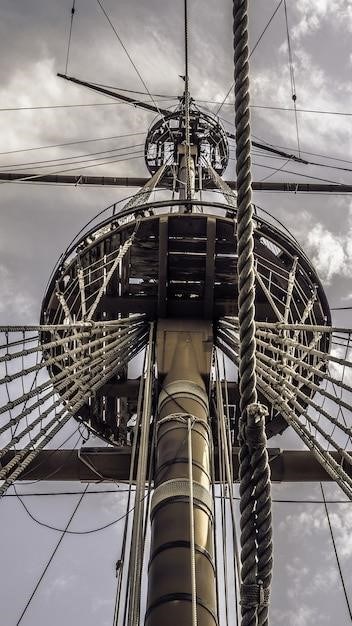Manual Power Pole for Boats⁚ A Comprehensive Guide
Manual power poles are a simple and affordable way to anchor your boat in shallow water. They are a popular choice for anglers who want a silent and non-invasive way to hold their boat in position while fishing. Manual power poles consist of a pole that is passed through a mount and then pressed into the bottom. They are typically made of fiberglass or aluminum and come in a variety of lengths to suit different boat sizes and depths. This guide will provide a comprehensive overview of manual power poles for boats, covering everything from their benefits to their maintenance.
What is a Manual Power Pole?
A manual power pole is a type of shallow water anchor designed to provide a stable and secure hold for your boat in depths of 10 feet or less. Unlike traditional anchors that require heavy chains and ropes, manual power poles offer a simpler and more efficient method of anchoring. They consist of a long, sturdy pole made from materials such as fiberglass or aluminum, which is typically mounted on the transom of your boat. The pole can be extended downward into the water and then pressed into the bottom, creating a secure anchor point for your vessel.
The primary function of a manual power pole is to provide stability and control for your boat in shallow water. This makes them particularly valuable for anglers who want to maintain a precise position while fishing in shallow areas like flats, sandbars, or shorelines. Manual power poles are also often used for other boating activities such as anchoring for swimming, picnicking, or simply enjoying a calm spot on the water.
The simplicity and effectiveness of manual power poles make them a popular choice for boaters who prefer a hands-on approach to anchoring. They offer a straightforward solution for holding your boat in place, without the need for complex electronics or hydraulic systems.
Benefits of Using a Manual Power Pole
Manual power poles offer a range of advantages for boaters, particularly those who enjoy fishing in shallow water. Here are some key benefits⁚
- Precise Positioning⁚ Manual power poles allow you to maintain a precise position in shallow water, making them ideal for anglers who need to stay in a specific spot to target fish. You can easily adjust your position by extending or retracting the pole, ensuring you are always in the prime fishing zone.
- Silent Deployment⁚ Unlike traditional anchors, manual power poles are silent when deployed, reducing the risk of spooking fish. This is particularly beneficial for anglers who want to minimize noise and vibrations in sensitive fishing areas.
- Simple and Easy to Use⁚ Manual power poles are straightforward to operate, requiring no complex electronics or hydraulic systems. Their simple design makes them user-friendly and easy to learn, even for novice boaters.
- Cost-Effective Solution⁚ Compared to electric power poles, manual power poles offer a more affordable anchoring solution. This makes them a budget-friendly option for boat owners who want the benefits of a shallow water anchor without breaking the bank.
- Versatile Application⁚ Manual power poles are not just for fishing. They can be used for a variety of activities, including swimming, picnicking, or simply anchoring your boat in a calm and protected spot. Their versatility makes them a valuable addition to any boat owner’s arsenal.
The benefits of manual power poles make them a practical and reliable tool for boaters who enjoy shallow water activities. They offer a balance of convenience, affordability, and efficiency, making them a popular choice among anglers and recreational boaters alike.
Types of Manual Power Poles
Manual power poles come in a variety of styles, each designed to meet the specific needs of different boaters and fishing situations. Here are some common types⁚
- Standard Manual Power Poles⁚ These are the most basic type of manual power pole, consisting of a fiberglass or aluminum pole that is manually extended and retracted using a crank or lever system. They are typically mounted on the transom or bow of the boat and offer a simple and reliable anchoring solution.
- Push Pole Anchors⁚ These are similar to standard manual power poles but are designed to be used as a push pole for maneuvering the boat in shallow water. They can be extended and retracted for anchoring and then used as a push pole to navigate through tight spots or shallow areas.
- Multi-Purpose Manual Power Poles⁚ These poles are designed to serve multiple purposes, combining the functionality of a standard manual power pole with additional features like a built-in rod holder, a measuring tape, or even a light. This versatility makes them a practical choice for anglers who want a single tool for various tasks.
- DIY Manual Power Poles⁚ Some boaters choose to build their own manual power poles, using readily available materials and plans. This allows for customization and cost savings, but it requires some DIY skills and knowledge.
The best type of manual power pole for you will depend on your individual needs and preferences. Consider the size of your boat, the depth of the water you typically fish in, and the features you require. With so many options available, you’re sure to find the perfect manual power pole for your boating adventures;
How to Choose the Right Manual Power Pole
Selecting the right manual power pole for your boat requires considering several factors to ensure it meets your specific needs and preferences. Here are some key aspects to keep in mind⁚
- Boat Size and Weight⁚ The power pole should be rated for the size and weight of your boat. Larger boats require stronger and longer poles to provide adequate anchoring capabilities.
- Fishing Depth⁚ Consider the depths you typically fish in. Choose a pole that is long enough to reach the bottom and provide a secure anchor in the desired depth.
- Material⁚ Fiberglass and aluminum are common materials used for manual power poles. Fiberglass is lighter and more flexible, while aluminum is stronger and more durable. The choice depends on your preference and the specific demands of your fishing style.
- Features⁚ Evaluate the features offered by different models. Some poles include built-in rod holders, measuring tapes, lights, or other accessories that enhance their functionality.
- Ease of Use⁚ Choose a pole with a comfortable grip and a smooth operating system. The crank or lever system should be easy to use and retract the pole without excessive effort.
- Budget⁚ Manual power poles vary in price, depending on their features, materials, and brand. Set a budget and find a pole that provides the desired features within your price range.
By carefully considering these factors, you can select a manual power pole that will enhance your fishing experience and provide a secure anchor for your boat in shallow water.
Installation and Usage
Installing and using a manual power pole is a straightforward process, but it’s essential to follow the manufacturer’s instructions for proper setup and operation. Here’s a general guide⁚
- Installation⁚ Most manual power poles come with a mounting bracket that attaches to your boat’s transom or bow. Choose a location that allows for easy access and doesn’t interfere with other equipment. Use the provided hardware to securely attach the bracket to the boat.
- Pole Insertion⁚ To use the power pole, simply slide the pole through the mounting bracket and press it into the bottom. The pole should be inserted at a slight angle to ensure a firm hold. Some poles feature a built-in depth gauge or markings to help you determine the proper insertion depth.
- Retraction⁚ To retract the pole, simply use the crank or lever system to pull it back up. The pole should retract smoothly without excessive effort. Once retracted, store it in a secure position on the boat.
- Maintenance⁚ Regularly inspect the pole for any signs of damage or wear. Clean and lubricate the moving parts to ensure smooth operation. Replace any worn or damaged components as needed.
With proper installation and maintenance, a manual power pole can provide a reliable and convenient way to anchor your boat in shallow water.
Pros and Cons of Manual Power Poles
Manual power poles offer a blend of affordability, simplicity, and functionality for boat owners. However, as with any piece of equipment, there are both advantages and disadvantages to consider⁚
Pros⁚
- Cost-Effective⁚ Manual power poles are generally more affordable than electric models, making them a budget-friendly option for boat owners.
- Simple Operation⁚ Manual power poles are easy to use and require minimal training or technical expertise. They are a good choice for boaters who prefer a hands-on approach.
- Quiet Operation⁚ Manual power poles are typically silent when deployed and retracted, making them ideal for fishing in areas where noise can spook fish.
- Versatile Applications⁚ Manual power poles can be used for various purposes, including anchoring, holding a position in shallow water, and even as a push pole for maneuvering in tight spaces.
Cons⁚
- Manual Effort⁚ Deploying and retracting a manual power pole requires physical effort, which can be tiring, especially in rough conditions.
- Limited Holding Power⁚ Manual power poles may not provide the same holding power as electric models, particularly in strong currents or rough seas.
- Durability⁚ Some manual power poles may be less durable than electric models, especially if they are not made from high-quality materials.
Weighing the pros and cons is important to determine if a manual power pole is the right choice for your boating needs.
Comparison with Electric Power Poles
While manual power poles offer a practical and affordable solution, electric power poles provide a level of convenience and functionality that manual models cannot match. Here’s a breakdown of key differences between the two⁚
Electric Power Poles⁚
- Effortless Deployment⁚ Electric power poles use hydraulic or electric motors to deploy and retract the pole, eliminating the need for manual effort. This is especially helpful in rough conditions or when fishing for extended periods.
- Stronger Holding Power⁚ Electric models often have more powerful motors, enabling them to drive the pole deeper into the bottom and provide superior holding power in strong currents or rough water.
- Advanced Features⁚ Some electric power poles come with features like remote control, depth sensors, and automatic deployment/retraction, enhancing convenience and control.
Manual Power Poles⁚
- Cost-Effective⁚ Manual models are significantly cheaper than electric power poles, making them a budget-friendly option.
- Simple Operation⁚ Manual power poles require no electrical connections or batteries, making them easier to install and maintain.
- Quiet Operation⁚ Manual models tend to be quieter than electric power poles, minimizing noise that could spook fish.
Ultimately, the choice between a manual and electric power pole depends on individual needs and preferences. While electric power poles offer greater convenience and functionality, manual power poles remain a viable option for budget-conscious boaters who prioritize simplicity and quiet operation.

Maintenance Tips
Proper maintenance ensures the longevity and optimal performance of your manual power pole. Here are some essential tips to keep your pole in top condition⁚
- Clean Regularly⁚ After each use, rinse the pole with fresh water to remove any salt, sand, or debris that can cause corrosion or damage. Pay particular attention to the mounting bracket and the tip of the pole.
- Inspect for Wear and Tear⁚ Regularly inspect the pole for any signs of cracks, scratches, or other damage; If you notice any wear, consider replacing the pole or repairing it promptly.
- Lubricate Moving Parts⁚ If your manual power pole has a crank or lever system, lubricate the moving parts with a marine-grade grease or oil. This will prevent rust and ensure smooth operation.
- Store Properly⁚ When not in use, store your manual power pole in a dry and protected location. This will help prevent corrosion and damage from the elements.
Following these maintenance tips will ensure your manual power pole remains in good working order for years to come. Regularly checking and maintaining your pole will not only prolong its lifespan but also ensure safe and reliable performance on the water. If you notice any significant issues, consult a qualified marine mechanic for repairs or replacements.


